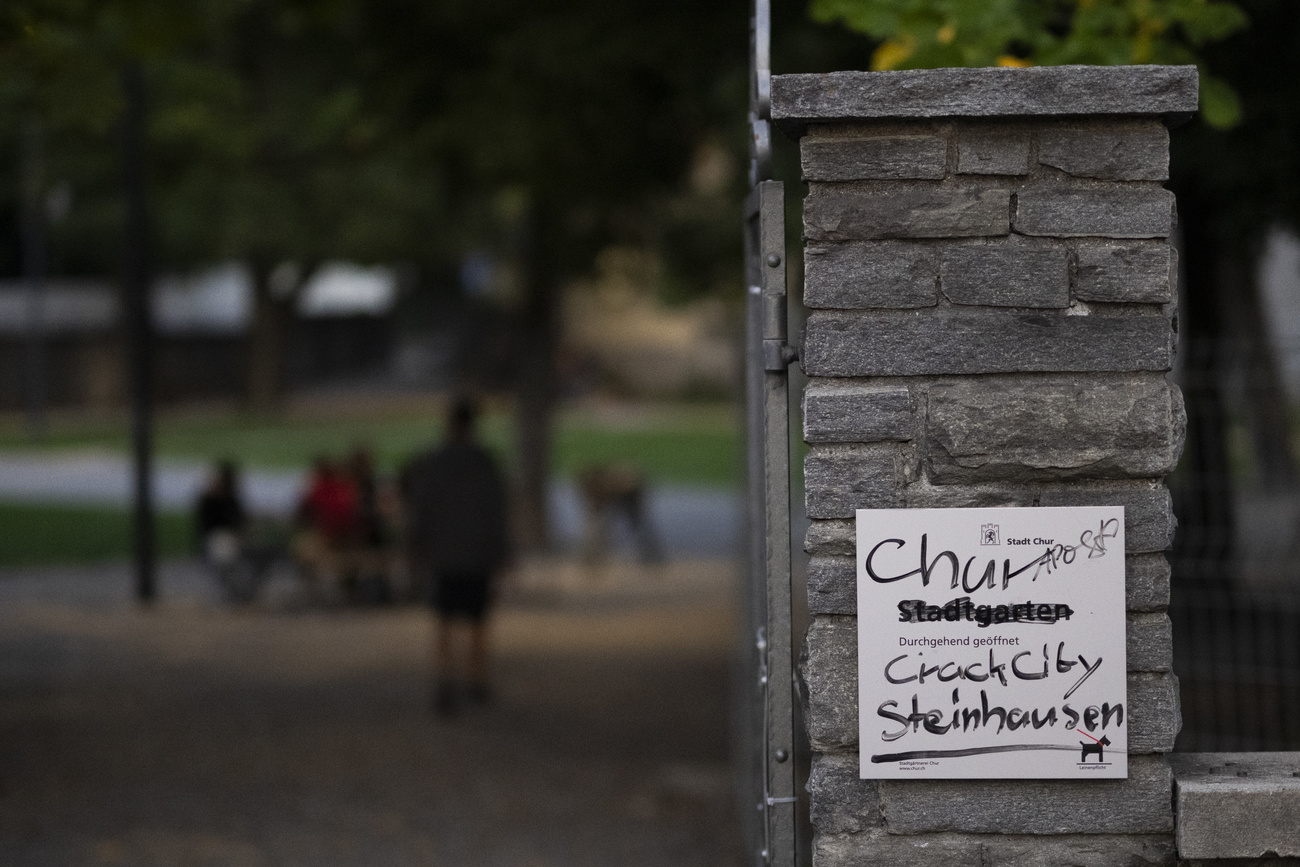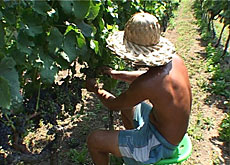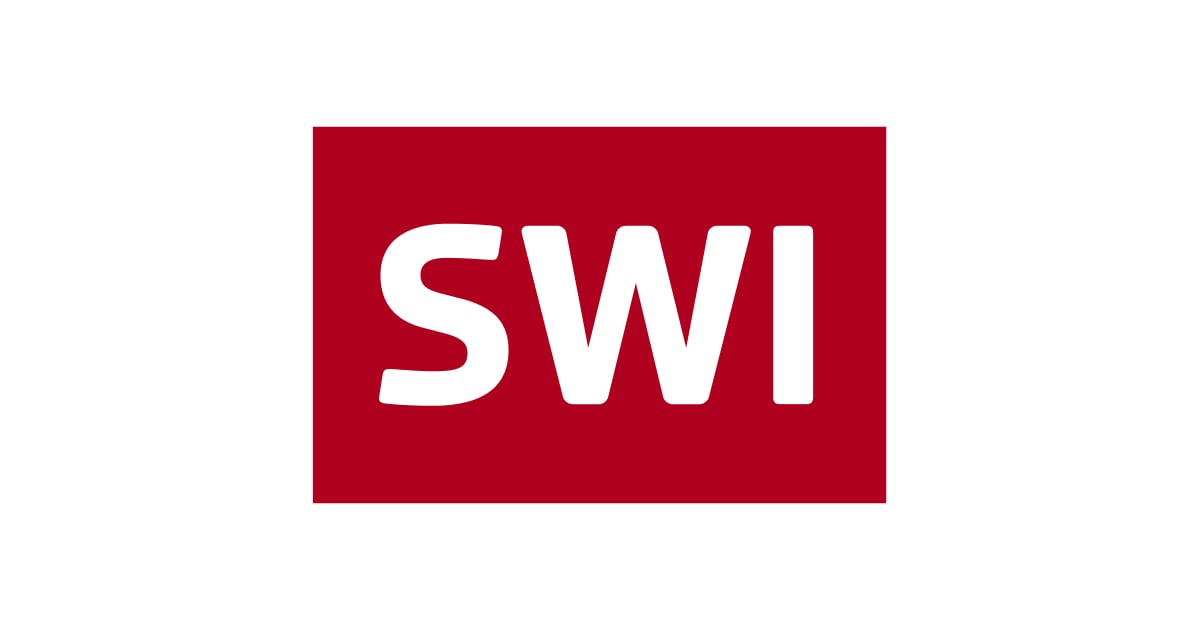Wine technology – an ancient obsession

Hans-Peter Ruffner and Werner Koblet both produce wine in Zurich, but while one concentrates on future advances, the other is busy digging up the past.
Both men work in the lakeside town of Wädenswil: Ruffner at the Swiss agricultural research centre and Koblet at the nearby museum of winegrowing.
The six hectares of vineyard cultivated by the research centre produce one of the most diverse crops in Switzerland. Since Ruffner’s team is charged with investigating the strengths and weaknesses of various grapes, up to 170 different types can be found on the research centre’s land.
“About half of what we harvest is made into wine,” says Ruffner from a picturesque stone platform looking down on the vineyards. “So we end up with about 80 different wine types each year, which I imagine is unique for such a small area.
“Our job is to measure the suitability of all these grapes for the conditions and climate here in eastern Switzerland, which we know is not the best in the world.
“We have entomologists looking at the effect of insects on the wine, plant protectionists looking at things like fungus and mildew and of course meteorologists, who will be very busy this year, seeing how the hot summer affected the crop.”
High-tech
Housed in a former chateau perched above the vineyards, the research centre could be mistaken from the outside for a traditional family wine plantation. Stepping into the building, however, visitors find themselves wandering through high-tech laboratories where researchers break down the grapes and wine to the level of microbiology.
The research centre’s website offers papers ranging from “the effect of ascorbic acid on the ‘stress’ character of wines” to “the valorization of nitrogenized manure in grassed vineyards”. But while it may sound like academic gobbledygook to the lay reader, Ruffner says the local winemakers are keen consumers of the research centre’s findings.
“The wine producers here in Zurich and from all over German-speaking Switzerland look to Wädenswil for the latest study results, but also for help with their own specific problems. If a winegrower has been hit by a particularly bad hailstorm for example, he’ll usually be on the phone to us straight away, to find out what he can do.
“We also produce a regular journal which most of the wine producers subscribe to. With the family firms, it’s often the grandfather who will go through the journal and then distribute the articles around the family.”
Forgotten grapes
Despite their many years in the industry, even the most knowledgeable of those grandfathers might have difficulty in identifying some of the grapes at the Wädenswil winegrowing museum, just a couple of minutes drive along the lake from the research centre.
As well as chronicling the history of winemaking in the region, the museum is keeping some of the past alive in the present, by seeking out and cultivating forgotten grape types.
“Many of the grapes we grow here had more or less disappeared when we opened the museum,” Werner Koblet explained as he showed swissinfo around the museum’s vineyard.
“We thought it would be interesting to grow some of the varieties that were used in the region hundreds of years ago so we asked the family winegrowers to look around their farms, by the chicken houses, behind the manure piles and so on.
“We found about ten varieties such as this Elbling,” gestures Koblet, “which was probably brought to the area by the Romans in the second or third century.”
Past technologies
Inside the museum, artefacts ranging from Roman winegrowing implements to eighteenth century farmhouse furniture heighten the sense of tradition and nostalgia. But there are also plenty of reminders that the winegrowers of yesteryear were just as preoccupied as those of today with the search for the latest technology.
The centrepiece of the museum is a magnificent oak wine press built in 1761, spanning 13 metres and weighing 23 tonnes. Later models are scattered around, each getting smaller and more complex than their predecessor.
One corner of the museum chronicles the devastating effect which the Phylloxera louse had on European vines in the mid-nineteenth century, and shows how scientists of the time found a solution by grafting European grapes onto resistant North American roots.
Just as creative but slightly less effective is a cannon-like device found on the museum’s first floor. Sold to winemakers as a “hail gun”, the nineteenth century device was used to shoot at clouds to prevent hail from falling.
“It was thought that a big bang could break up a cloud, or at least move it over to the neighbour’s property,” grins Koblet. “The gun seemed to work very well, but it was later shown that if you take all the times when conditions are right for hail, it only actually hails two or three times. So the hail gun’s 97 per cent success rate was actually just a matter of chance.”
Strange tastes
Although Koblet regrets the demise of the hail gun, he warmly welcomes the technological developments being made in modern winegrowing.
A few years ago, the museum replicated an old wine, using grape types and production methods favoured at the turn of the last century. According to Koblet, the resulting vintage was not among Zurich’s finest.
“Just as they did in the olden days, we threw in a good mix of white grapes, rosé grapes, ripe and unripe and allowed our visitors to try it. Unfortunately, they didn’t know a hundred years ago how to reduce acidity in the way we do today so it made for a fairly sharp taste.
“I’ve heard it said that in the old days you could really distinguish between the wines from neighbouring villages, while today they taste increasingly the same. It may be true that better wine knowledge makes for a more uniform product, but I’m convinced that most of those old ‘varieties’ in taste were actually off-flavours.”
Later this month, the wine museum is planning to operate its eighteenth century press and offer the public some more tastes from the past. And if the grapes come out anything like the previous batch, the experience should also increase the visitors’ gratitude for the technical advancements being made today.
swissinfo, Mark Ledsom in Zurich
Zurich’s wine growing museum and the federal agricultural research centre are both located in the lakeside town of Wädenswil.
The museum is open to the public on Sundays during the summer.
Later this month the museum plans to activate its eighteenth century wine press.

In compliance with the JTI standards
More: SWI swissinfo.ch certified by the Journalism Trust Initiative











You can find an overview of ongoing debates with our journalists here . Please join us!
If you want to start a conversation about a topic raised in this article or want to report factual errors, email us at english@swissinfo.ch.